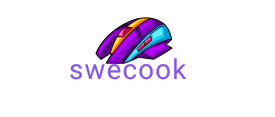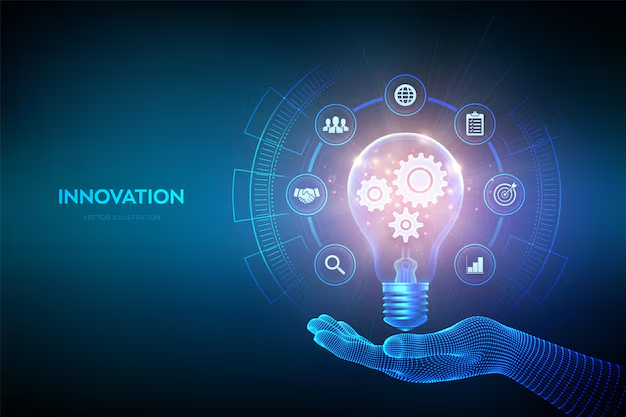Innovation is often seen as a product of technology, business processes, and strategy, but it’s also deeply intertwined with creativity. In today’s fast-paced world, technological advancements and creative thinking come together to fuel transformative breakthroughs in industries ranging from entertainment and design to healthcare and finance. The intersection of technology and creativity is where the magic happens – it’s where solutions to complex problems are born and new possibilities are unlocked.
In this article, we’ll explore how technology and creativity are converging to drive innovation, highlighting how businesses, individuals, and entire industries are capitalizing on this synergy to create powerful, cutting-edge solutions. We’ll also examine the importance of fostering both technological expertise and creative thinking within organizations and how this balance can lead to unprecedented success.
The Role of Technology in Creativity
Technology has played an essential role in enabling creative expression. Tools like graphic design software, 3D printing, virtual reality (VR), and artificial intelligence (AI) have given creators more freedom and opportunities than ever before. These technologies have not only expanded the scope of creativity but have also introduced new mediums of creation, allowing artists, designers, and engineers to push the boundaries of their work.
For example, AI has recently become a tool for creativity, enabling the generation of music, art, and even literature through algorithms. Artists can use these systems to enhance their creative processes, produce new forms of art, and experiment with unconventional techniques. Similarly, VR has transformed the way filmmakers, game developers, and architects approach their craft, providing immersive environments that allow creators to interact with their work in ways that were previously impossible.
The key takeaway is that technology doesn’t stifle creativity—it amplifies it. By automating tedious tasks, allowing for rapid prototyping, or providing entirely new methods of creation, technology opens up endless possibilities for human imagination.
The Role of Creativity in Technology
While technology is the enabler, creativity is the spark that drives meaningful progress. Without creativity, technology can become a tool without purpose. It’s creativity that gives meaning to technological advancements, guiding them toward solving real-world problems. This is especially evident in industries like healthcare, where creative thinking is required to design innovative solutions for improving patient outcomes and enhancing treatment methodologies.
For instance, the integration of AI in healthcare is not merely a technical breakthrough—it’s the result of creative minds envisioning how technology can improve the way medical diagnoses are made, treatments are prescribed, and healthcare services are delivered. Creative minds design algorithms that can predict medical conditions before symptoms arise, personalize treatments for individual patients, and optimize the efficiency of healthcare systems.
Creativity also drives the development of new business models. Think of the app-based economy: Uber, Airbnb, and others didn’t invent entirely new technologies, but they creatively applied existing technology to revolutionize traditional industries like transportation and hospitality.
How Technology and Creativity Fuel Innovation
When technology and creativity converge, innovation thrives. At this intersection, businesses can create new products and services, improve processes, and solve problems in ways that were once thought impossible. Let’s examine a few industries where this dynamic duo is driving extraordinary innovation:
- Entertainment: The entertainment industry has embraced new technologies such as augmented reality (AR), virtual reality (VR), and AI to create immersive experiences. VR, for example, is now being used to transport users to fantastical worlds in gaming, movies, and theme parks, where creative storytelling combines with cutting-edge technology to engage audiences in entirely new ways.
- Design and Architecture: Creative minds in architecture use advanced computer-aided design (CAD) software to build structures that were once only possible in the imagination. 3D printing allows for the rapid prototyping and even construction of complex designs that were too costly or time-consuming to build using traditional methods. Moreover, AI is being applied to assist in the design process by generating blueprints and identifying structural weaknesses in real-time.
- Healthcare: AI-powered diagnostics and robotic surgeries are a prime example of innovation at the intersection of technology and creativity. Doctors and medical engineers are combining creative problem-solving with AI to provide more accurate diagnoses, less invasive treatments, and personalized care for patients, all of which are improving health outcomes across the globe.
- Finance: In the world of finance, blockchain technology, powered by creative applications of cryptography, is helping to streamline and secure transactions. Fintech companies are using AI and machine learning to create algorithms that predict market trends, optimize investments, and even enhance customer service through chatbots.
The fusion of technology and creativity brings about novel solutions to both old and new challenges, allowing businesses to disrupt existing markets or create entirely new ones.
Frequently Asked Questions (FAQs)
- How does technology amplify creativity?
- Technology provides tools that automate repetitive tasks, enabling creative minds to focus on higher-level thinking and exploration. It also opens up entirely new mediums and possibilities for creative expression, such as virtual reality, AI, and 3D printing.
- Can creativity exist without technology?
- While creativity is not dependent on technology, it thrives when technology enhances and expands the possibilities for creative expression. Technology provides the tools that help bring creative ideas to life in ways that were once impossible.
- What is an example of creativity driving technological progress?
- In healthcare, creative minds have applied AI and machine learning to design diagnostic tools and treatment plans that personalize patient care. These innovations transform how medical professionals deliver services, leading to better patient outcomes.
- How can businesses encourage the intersection of technology and creativity?
- Businesses should foster a culture of collaboration, where technical and creative teams work together. Encouraging open communication and providing resources for experimentation allows both sides to flourish.
- What industries benefit the most from the intersection of technology and creativity?
- Industries like entertainment, healthcare, design, finance, and manufacturing are seeing some of the most significant innovations through the convergence of technology and creativity.
- How is artificial intelligence changing creative industries?
- AI is enabling the creation of music, artwork, and even writing through algorithms. It can assist artists by automating repetitive tasks or generating new ideas based on patterns, allowing creators to focus on refining their work.
- What’s the future of the intersection between technology and creativity?
- The future promises even more exciting possibilities as technologies like AI, quantum computing, and biotechnology evolve. These advancements will continue to unlock new creative potentials and lead to the creation of groundbreaking solutions across industries.
Conclusion
Innovation thrives at the intersection of technology and creativity. While technology provides the tools and platforms, creativity ensures that these tools are used to solve real-world problems in novel and effective ways. The synergy between the two leads to transformative solutions in industries as diverse as entertainment, healthcare, finance, and design. Companies that successfully harness both technology and creativity will lead the way in shaping the future, providing better products, services, and experiences for consumers.
Key Takeaways
- Technology amplifies creativity by providing tools that enhance artistic expression, automate tasks, and offer new mediums of creation.
- Creativity drives technological progress by guiding innovations toward solving real-world problems and improving processes.
- Businesses and industries that foster collaboration between creative and technical minds are well-positioned to innovate and disrupt traditional markets.
- The future of innovation lies in the continued fusion of technology and creativity, unlocking unprecedented possibilities across all sectors.

